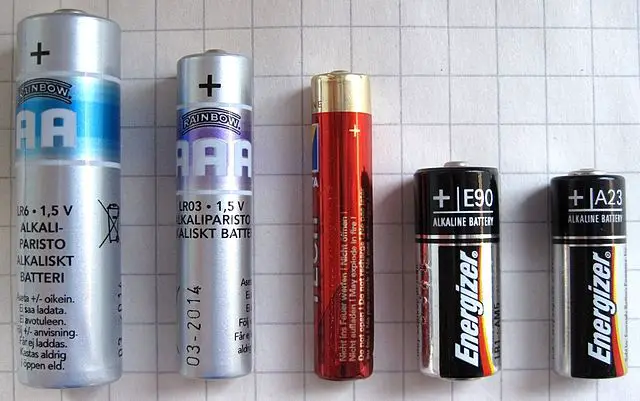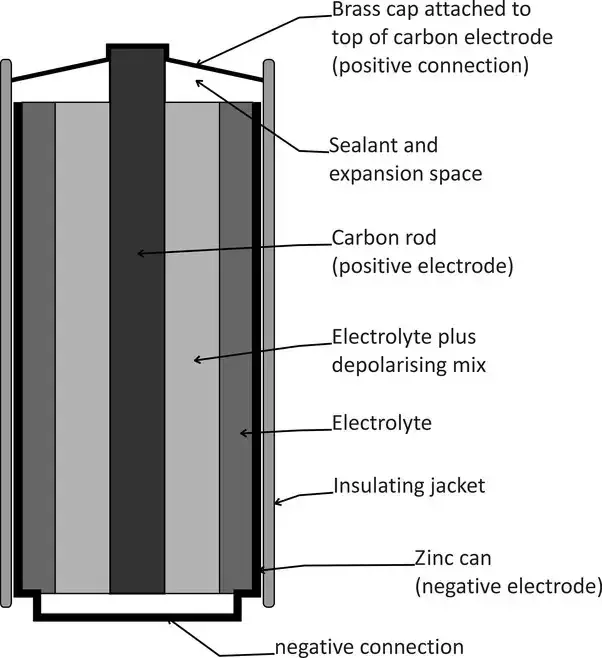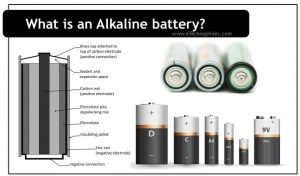Last updated on April 5th, 2024 at 01:59 pm
Alkaline batteries are the most popular and the most widely used batteries in the market. Since they are mainly used for domestic and household purposes, these batteries are more familiar to the common people.
Apart from other battery technologies, alkaline batteries are available in numerous sizes and capacities which make them suitable for diverse applications. The article will give you some fundamental knowledge of these batteries.
Table of Contents
What are Alkaline batteries?

They get their name because of the alkaline electrolyte used in them. They are usually known as primary batteries. But their rechargeable version is now available on the market. These are the most plentiful and widely produced battery on Earth.
They are known for their long shelf life of about 5-10 years and easy handling. Their nominal voltage is 1.5V. The amount of current delivered is relative to the size of the battery. It provides an average of 2500 mAh capacity, which is highly dependent on the connected load.
Alkaline batteries are considered low-risk batteries since they are not prone to accidents and are suitable for regular disposal.
Construction
An alkaline battery has Zinc as the anode and Manganese dioxide as the cathode. Potassium hydroxide (KOH) is used as the electrolyte. The zinc reacts with KOH to release electrons and form zinc hydroxide and water.
The electrons released by the anode migrate to the cathode via the circuit. This powers the devices connected in the circuit.

Once the electron reaches the cathode, it reacts with Manganese dioxide and water to form Manganese tri-oxide and hydroxide ions. This reaction keeps repeating until the circuit is closed. Thus only the anode and cathode are consumed during the reaction. The electrolyte is replenished at every cycle. Read more.
Alkaline battery sizes
They are available in different sizes. The popular standard sizes are AA, AAA, A23, 9V, and button size.
Size AA
These are known as “Double A Batteries”. The nominal voltage produced by AA batteries is 1.5V. They are mostly used in toys or alarm clocks.
Size AAA
These are known as ‘Tripple A Batteries’. It is smaller than AA ones. The nominal voltage is 1.5V. The manor application is in the remote control.
Size A23
This battery type is known for its large nominal voltage, which is 12V. These are cylindrical and are usually used in garage controls.
Size 9V
Similar to its name, it produces a nominal voltage of 9V. These are rectangular batteries. It is larger in size. These are suitable to work in extreme temperature conditions. The major applications include smoke detectors, battery-powered temperature alarms, infrared thermometers, walk-in coolers, etc.
Button size
These are tiny-sized batteries used in small devices like watches and headphones. It usually comes in a coin shape. The nominal voltage for these batteries is 1.5V.
Note: These are a few among the different sizes of alkaline batteries. The details of more sizes can be found in this article.
Rechargeable alkaline batteries
Although alkaline batteries are more popular as primary batteries, their rechargeable version are also widely accepted. They were introduced in the early 1970s.
Rechargeable alkaline batteries are also known as Rechargeable Alkaline Manganese (RAM). The nominal voltage is 1.5V and is comparatively cheaper than other rechargeable batteries.
The rechargeable alkaline batteries are also known for their long shelf life. It also supports a good cycle life of about 500 charges if recharged properly (at regular intervals).
As with any other rechargeable batteries, deep discharge badly affects the life of these batteries too. They are easy to dispose of and have less environmental impact compared to other cells. The major applications of these batteries include remote control handsets, portable radios, etc. Read more.
Applications
They are preferred for low-current drain applications. It includes:
- flashlights
- MP3 players
- portable radios
- alarm clocks
- digital cameras
- remote controls
- toys, etc.
Advantages
Alkaline batteries are mostly preferred for domestic and industrial purposes. Here are some common applications:
- These batteries are known for a long shelf life of about 5-10 years.
- It provides a high energy density when compared to the similar-sized zinc-carbon battery,
- It is suitable to use in different temperature ranges.
- It has a non-toxic chemical composition. Thus it is safe to handle and dispose of.
- It is one of the largest produced batteries on the market. Hence they are easily available.
- It costs much less compared to other battery technologies.
- It has standard sizing and is available in numerous sizes. It helps the developers to fit the battery easily in their designs.
- It has a low risk of leakage compared to other batteries.
- Although alkaline batteries are more suitable for low-current drain applications, they can provide high voltages by connecting them in series.
Potting is filling an enclosure with a compound to increase shock resistance and create a barrier against moisture and corrosive materials.
Disadvantages
Alkaline batteries possess fewer drawbacks compared to other battery technologies.
- The alkaline batteries have more internal resistance compared to other batteries. This reduces the power output and reduces efficiency as well.
- Compared to the latest battery technologies like lithium-ion batteries, alkaline batteries are heavier and bulkier.
- Over time, these batteries are vulnerable to leakage of corrosive liquid that damages the devices they are in. This mainly occurs when the battery is placed for long periods in unused devices.
FAQs
What is the difference between alkaline and regular batteries?
Alkaline batteries typically provide greater energy density and extended shelf life as compared to regular batteries.
How to check if a battery is alkaline?
Alkaline batteries can be identified by checking their label (it must state “alkaline”) or by their distinctive black body and positive terminal at the top.
